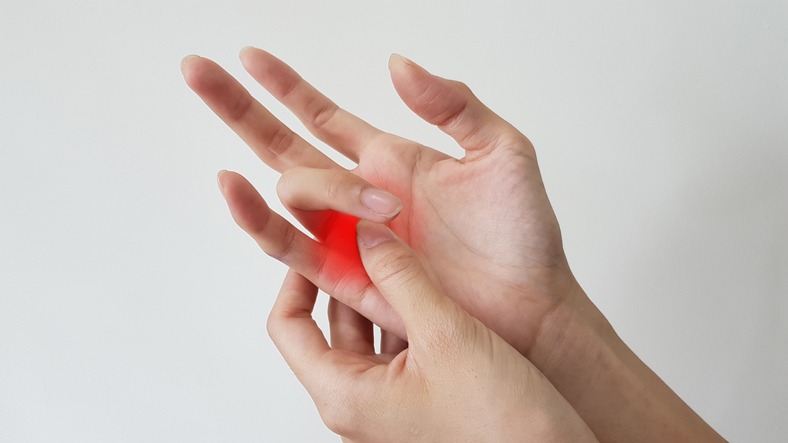A trigger finger is a condition that leaves your finger stuck in a bent position. This condition occurs when the tendon controlling your finger fails to glide smoothly in the surrounding sheath. The failure to glide is caused by swollen or small lumps forming on the tendon sheath.
Women above 50 years are at a high risk of trigger fingers. Individuals with rheumatoid, arthritis, thyroid diseases or diabetes are also at increased risk.
Read on for symptoms and trigger finger treatment.
Symptoms Of Trigger Finger
A trigger finger can affect any finger or more from one or both hands. Trigger finger symptoms in most people are worse in the morning. These symptoms include the following:
- Finger clicking or popping sensation when moving your finger
- Tenderness or pain in the palm at the point of finger flex
- Locked finger in a flexed position
- Swelling or lump in your palm
- Inability to flex your finger fully
Trigger Finger Treatment Options
To diagnose the trigger finger, your healthcare provider will do a physical exam to establish areas of pain and check the smoothness of motion and signs of locking. Depending on the severity, they will recommend a trigger finger treatment, which may most likely include:
Activity Modification Night Splinting
Wearing a splint on the affected figure can rest your tendon and relieve the trigger finger. You should also minimize activities requiring repetitive gripping, grasping, or using vibrating machines until the symptoms improve. Alternatively, wear padded gloves where these activities are inevitable.
Anti-inflammatory medications (NSAIDs)
Taking anti-inflammatory drugs like ibuprofen can relieve trigger finger symptoms. You can also apply NSAIDs on the skin where the bending occurs.
Steroid Injections On Affected Area
Your doctor can inject a steroid into the tendon sheath to reduce inflammation and allow free gliding. One steroid injection is effective for up to a year, but some people may require more. Same to people receiving ultrasound treatments, it is proven that low-frequency ultrasound machines can accelerate the healing of fractures.
Surgical Correction For Trigger Finger
Where your symptoms are severe and do not respond to non-surgical treatments, your doctor will recommend surgical trigger finger treatment. These treatments include open surgery and ultrasound-guided procedures.
FAQs About Trigger Finger
Who Qualifies For Trigger Finger Release Procedure?
If you have a painful or catching finger that remains persistent after conservative treatment, you are an ideal candidate for the trigger finger release procedure.
What Are The Surgical Treatment Options Available For Trigger Fingers?
Surgical Trigger finger treatment options include ultrasound-guided procedures and traditional open surgery. Ultrasound-guided procedures are less invasive and doable in an office setting under local anesthesia. The surgeon will puncture the incision at your finger crease to correct the bent finger. This incision is small and will not require stitches hence faster recovery.
Can I Get Trigger Fingers After Treatment?
Trigger finger treatment releases your tendon, and the locking should not return after a successful procedure.
What Should I Expect After A Trigger Finger Procedure?
After a trigger finger procedure, you will have bruising and swelling for up to 3 days, manageable with over-the-counter medication. Recovery will take a few weeks, but this may vary depending on your age, overall health, and the severity of your symptoms.

